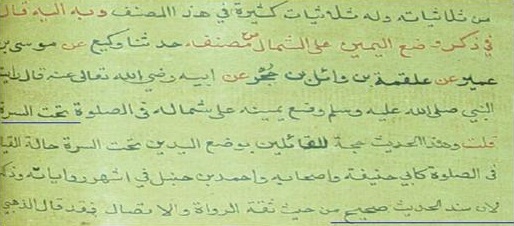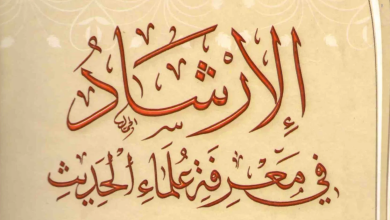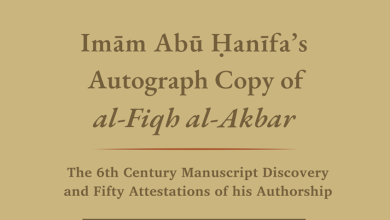Dirham al-Surra fi Wad’ al-Yadayn Tahta al-Surra
Dirham al-Surra fi wad’ al-yadayn tahta al-Surra is an Arabic work by Imam Muhammad Hashim al-Sindi al-Hanafi (d. 1174 AH) listing most of the well known evidences used by the Kufan Madhhabs of Imam Abu Hanifa, Imam Sufyan al-Thawri and their disciples that the established Sunna is to place the hands below the navel in Salah (namaz). This work also has counter replies by Sh. Muhammad Hayat al-Sindi (d. 1163 AH) who advocated that the hands should be placed on the chest in Salah. This latter view was thoroughly refuted by Shaykh Muhammad Hashim al-Sindi in his follow up responses. All of these works are in the pdf below.
Excerpt from Shaykh Dr. Abul Hasan Hussain Ahmed’s forthcoming work on where the hands should be placed in Salah:
Shaykh Muhammad Hashim al-Tatawi al-Sindi
(b. 1104 AH – d. 1174 AH)
Shaykh Muhammad Hashim al-Sindi has left a work in advancement of the position that the hands should be placed beneath the navel in Salah known as Dirham al-Surra fi wad’ al yadayn tahta al-Surra, Shaykh Hashim al-Sindi mentioned the narration from the Musannaf of Ibn Abi Shayba with its chain of transmission back to Wa’il ibn Hujr (ra) with the additional wording on the end of the Hadith: “under the navel.”
Shaykh Hashim said: “And this hadith is also strong (qawi) with regard to its chain of transmission (sanad)…” [1]
Also, Shaykh Hashim al-Sindi said in his reply to Shaykh Hayat al-Sindi and the latter’s Shaykh (Abul Hasan al-Sindi), known as Mi’yar al-Niqqad fi Tamyiz al-Maghshush an al-Jiyyad,[2] that the narration from the Musannaf of ibn Abi Shayba with the ziyada has a sanad (chain of transmission) that is:
“Jayyid (good) and there is no fault in it (la ghubar fi-hi).”
Also, in the last footnote to the said Mi’yar al-Niqqad,[3] Shaykh Hashim al-Sindi declared the narration from Wa’il ibn Hujr as in the Musannaf to have a Sahih (authentic) sanad (chain of transmission).
Shaykh Hashim al-Sindi has also left a work[4] listing the chains of transmission that he received principally from his Makkan based teacher, the Mufti of the Hanafi’s in that noble city, Shaykh Abdal Qadir ibn Abi Bakr al-Siddiqi, known as Ithaf al-Akabir bi-marwiyyat al-Shaykh Abdal Qadir.
In the preface to the printed edition of the above named Dirham al-Surra,[5] there was an introduction to it by the late Hanafi Muhaddith known as Shaykh Abdal Fattah Abu Ghudda (d. 1997). Shaykh Abdal Fattah mentioned that Shaykh Hashim al-Sindi was born in 1104 AH and he travelled to the Hijaz[6] in 1135 AH.
The prelude by Shaykh Abdal Fattah also mentioned that Shaykh Abdal Qadir al-Siddiqi passed away in the year 1138 AH and the said Ithaf al-Akabir was completed in the year 1136 AH. The Ithaf al-Akabir is available in a manuscript format in the Qasimiyya manuscript library in Pakistan.
Shaykh Hashim al-Sindi said in the Ithaf al-Akabir[7] that the narration in the Musannaf from Wa’il ibn Hujr (ra) with the additional wording on the end of the Hadith: “under the navel” (as underlined in the scan below) is a Hujja (evidence) for those who say that the hands should be placed below the navel while standing in Salah, which is the position of Imam Abu Hanifa and his Companions, and Imam Ahmed ibn Hanbal according to the most well known report attributed to him on where the hands should be positioned in Salah.
Scanned image from the Ithaf al-Akabir:
The last line of the above image also mentioned Shaykh Hashim as saying:
“For verily the chain of transmission (sanad) for the hadith is Sahih (authentic) due to the fact that the narrators (in the sanad) are all trustworthy and (the sanad) being fully connected (ittisal).”
_____________________________________
Footnotes:
1 – See p. 38 of the edition printed by Idaratul Qur’an wal Ulum al-Islamiyya (1st edn, 1414 AH, Karachi, Pakistan) with the foreword of Shaykh Abdal Fattah Abu Ghudda (d. 1997) and editing by Shaykh Na’eem Ashraf Nur Ahmed. This printed edition also contains the replies of Shaykh Muhammad Hayat al-Sindi (d. 1163 AH) who rejected the validity of the ziyada to Wa’il ibn Hujr’s narration as in some manuscripts, as well as Shaykh Hashim al-Sindi’s follow up rebuttals to his contemporary, Shaykh Hayat al-Sindi.
2 – See p. 101 of the volume containing the arguments of both Shaykhs Hashim and Hayat al-Sindi as described in the previous footnote
3 – See p. 114 of the printed edition described in an earlier footnote above
4 – In the terminology of Hadith, this type of compilation listing the chains of transmission of a scholar back to the original books or their authors is known as a Thabat
5 – See pp. 10-14
6 – The territory containing the two Holy cities of Makka and Madina
7 – Plate no. 154 of the manuscript edition of the Ithaf al-Akabir
Preview of Imam Muhammad Hashim al-Sindi’s book – Dirham al-Surra:
Download it HERE







